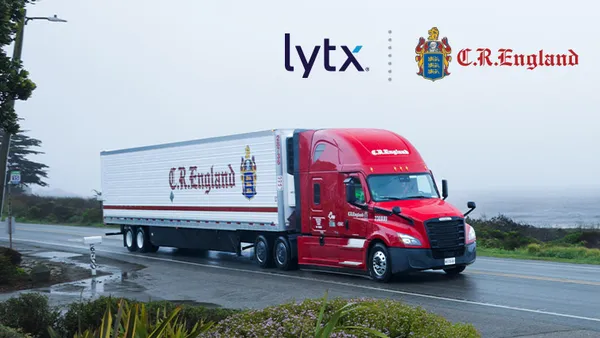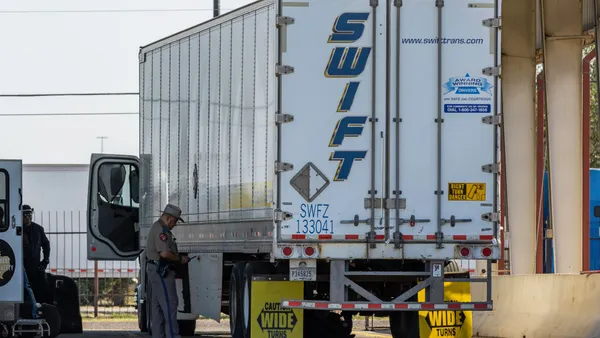Dive Brief:
- Pandemic-driven declines in truck driver employment in Canada will cost the trucking industry 3.2 billion Canadian dollars ($2.4 billion) in sales this year, according to research by think tank Conference Board of Canada, commissioned by Trucking HR Canada (THRC). According to the report, a truck driver position can be tied to an average annual revenue of 150,400 Canadian dollars ($110,723). Researchers estimated truck driver employment will average 296,600 in 2020, about 21,000 less than a pre-pandemic estimate.
- Truck drivers are expected to account for roughly half of transportation and logistics job losses stemming from the coronavirus. But by Q4 2021, truck driver employment will stabilize, researchers predict, and could exceed pre-pandemic labor market projections by 2023. "This is the only occupation for which this resurgence is projected," the report stated.
- However, trucking and logistics employment overall in 2023 is expected to be 3.3% below estimates made before the pandemic. Researchers expect there to be 690,000 workers in the sector, 24,000 less than projections made in January.
Dive Insight:
Employment numbers indicate industry confidence in the direction the economy is headed. When fleets expect an uptick in business, they'll recruit more workers. If that doesn't happen, job numbers drop.
In the U.S., transportation and warehousing jobs declined by 588,000 in April and May combined. Canada's job market experienced similar declines. THRC's report estimated unemployment would reach 14.4% in Q2 in Canada, which was the U.S. rate in April.
A THRC survey of trucking companies found employers had laid off 8.2% of their workers — including 10% of the dispatcher and mechanic workforce — citing COVID-19, through May. The reported estimated that, during the first half of this year, the Canadian industry shed 10.7% of its dispatchers (about 1,800 positions) and 10.3% of its mechanics (about 950 positions).
Now in the U.S., jobs numbers are growing and employers are looking to bring back furloughed workers. The transportation and warehousing sector added 99,000 jobs in June, according to the Bureau of Labor Statistics, more than 8,000 of which were in trucking specifically. Unemployment dropped 2.2 percentage points from the previous month to 11.1%.
Despite promising indicators, economists in the U.S. have been conflicted on what the recovery timeline might look like. One of the most important aspects of recovery is a vaccine for the coronavirus and treatment for COVID-19, Rajeev Dhawan, director of the Economic Forecasting Center at the College of Business at Georgia State University, told Transport Dive.
THRC's report also hinges on medical advancements. To develop their findings, researchers made assumptions about what will occur in the near future: Social-distancing measures will continue to be relaxed, but not fully relaxed until a vaccine is widely available in Canada in June 2021, and that there will not be a second economy-wide shutdown due to another wave of the virus.
Navistar CEO Troy Clarke said 2021 will be a better year than 2020, though the market may not return to 2018 or 2019 levels. "But if an effective [coronavirus] vaccine or treatment is developed and becomes available, the pace of the recovery could quicken," he said.
One pre-pandemic market condition is expected to come back in the near future in North America: The driver shortage.
"Despite the unprecedented economic shock caused by COVID-19, [labor] shortages among truck drivers are not a thing of the past," the report stated. Shortages could return within three years, according to the report, "with vacancies burgeoning beyond previously anticipated levels." Researchers cited the rapidly aging workforce, as well as the industry's challenges with recruiting youth and women.












